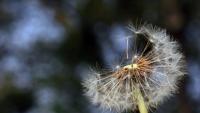Climate change, pollen, and allergic disease

Allergic diseases affect a substantial proportion of people living in urban areas in the United States in general and in New York City specifically. Many types of pollen are considered to be allergens, and have been linked to several manifestations of allergic disease, including allergic sensitization, exacerbation of allergic rhinitis, and exacerbation of allergic asthma. However, the role of pollen in temporal patterns of allergic disease is incompletely understood, and virtually nothing is known about the spatial distribution of pollen within cities and the relevance of this distribution to health. A better understanding of these relationships is especially critical as the length and severity of the annual pollen season are sensitive to temperature and CO2 concentrations and thus could be exacerbated by climate change.
The overall objective of this proposal is to measure the spatial abundance and temporal patterns of tree pollen in New York City and examine their associations with several allergic outcomes. We will also test the hypothesis that diesel exhaust exposure enhances allergic sensitization to tree pollen.
See the Advisory released by NYC DOH that was a result of this work:
2014 Advisory #9: Health Department reminds providers that rising spring tree pollen concentrations can exacerbate asthma in sensitive patients.